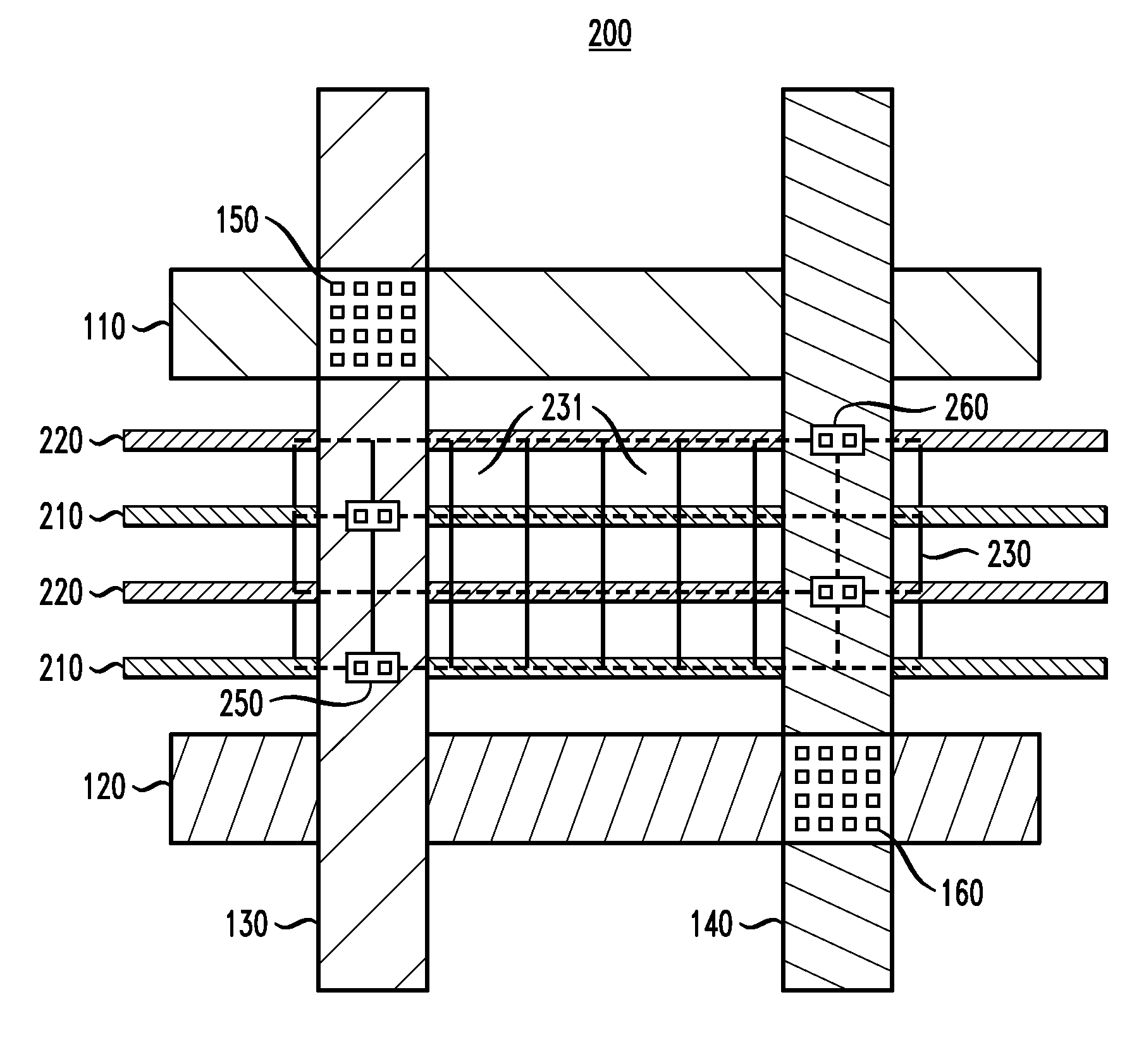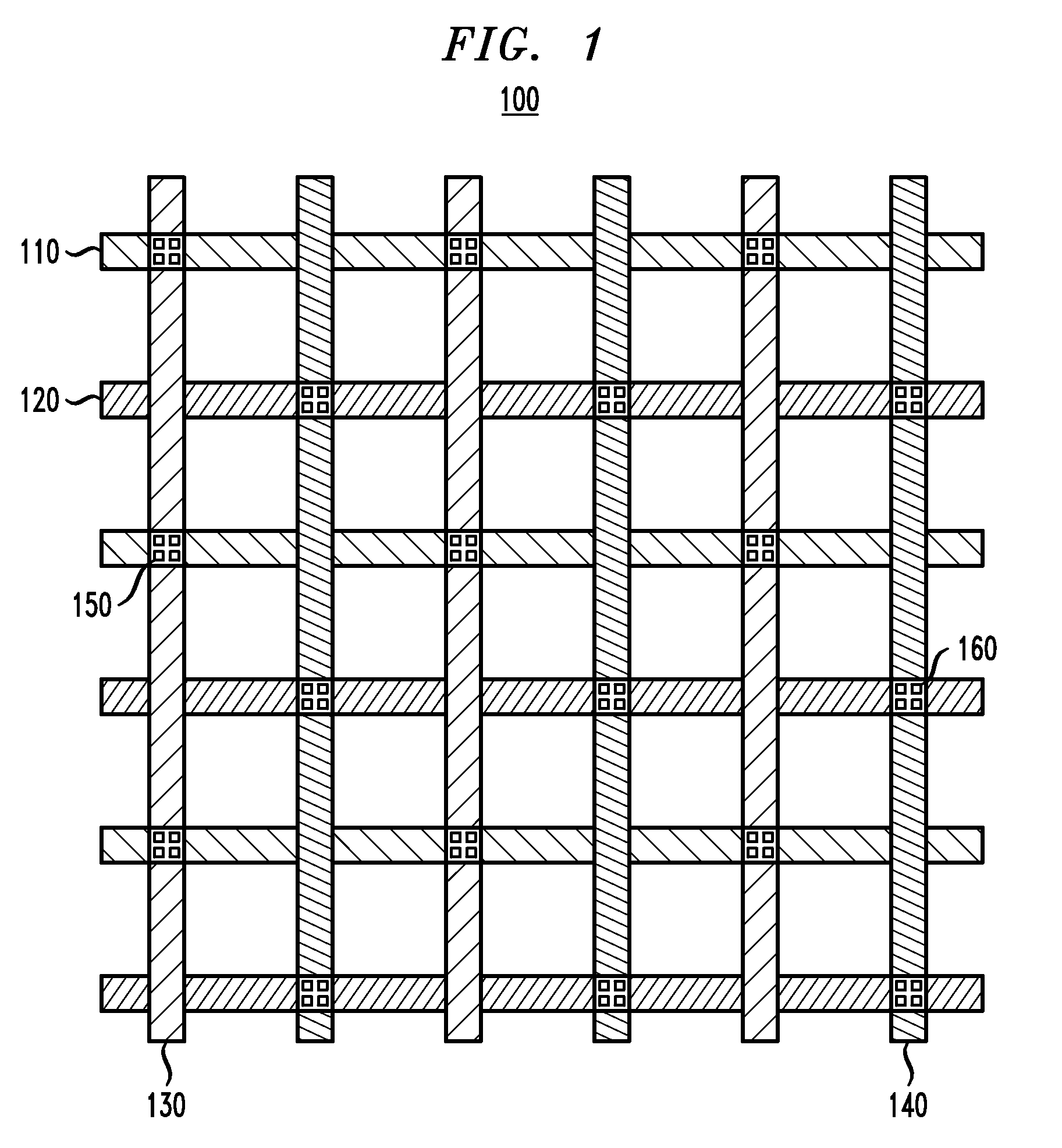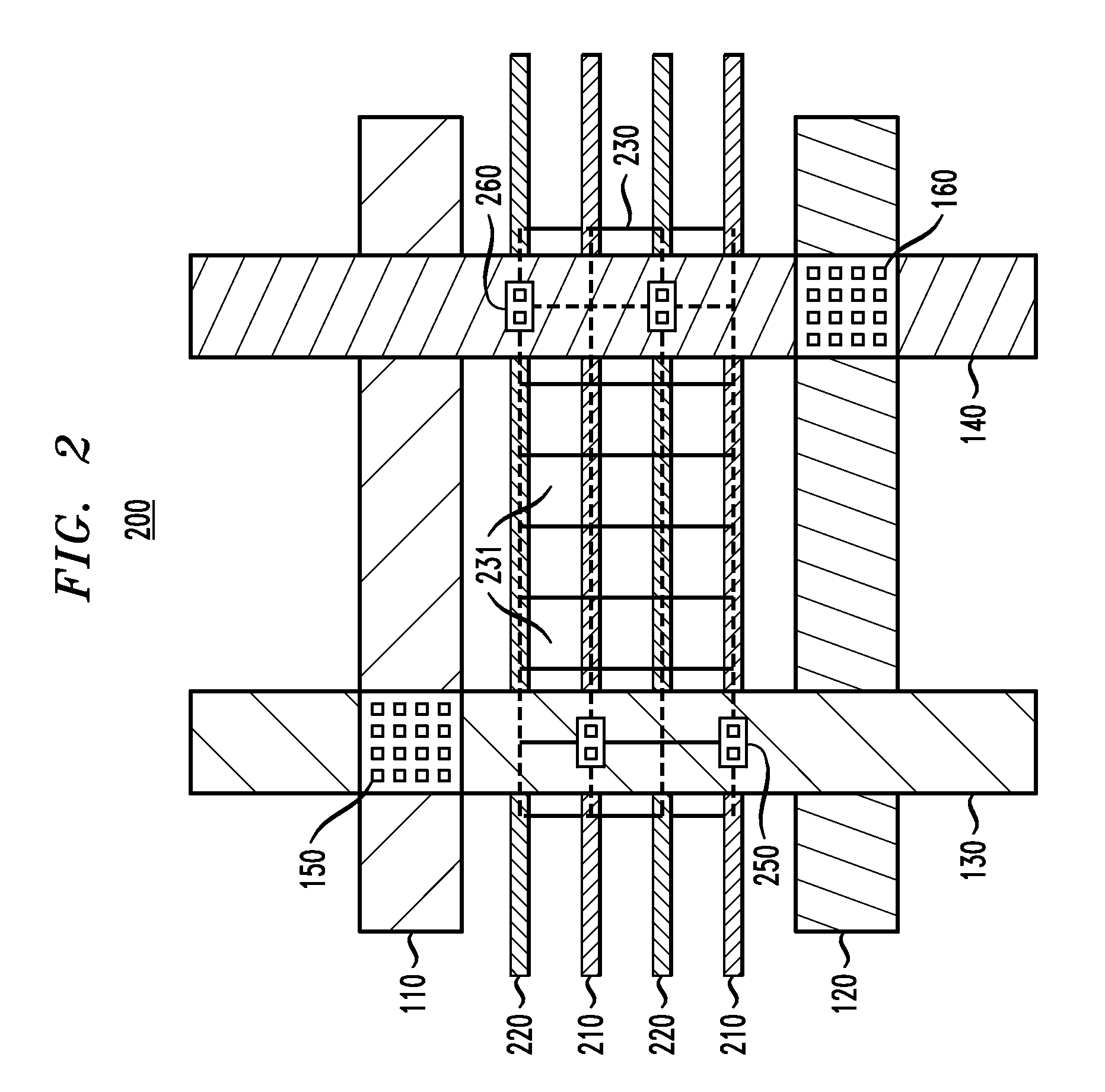Enhanced Power Distribution in an Integrated Circuit
a technology of integrated circuits and power distribution, applied in the field of semiconductor devices, can solve the problems of large overhead, large drawbacks of small memories, and large amount of die area occupied by memories, and achieve the effects of reducing the cost of ics, efficient power delivery, and small die area
- Summary
- Abstract
- Description
- Claims
- Application Information
AI Technical Summary
Benefits of technology
Problems solved by technology
Method used
Image
Examples
Embodiment Construction
[0023]The present invention will be described herein in the context of exemplary IC power distribution layouts and methods. It is to be understood, however, that the techniques of the present invention are not limited to the IC layouts and methods shown and described herein. Rather, embodiments of the invention are directed broadly to techniques for distributing power to standard cells in an IC in a manner which provides efficient use of space so as to reduce the required die area as compared to conventional IC designs. While embodiments of the invention will be described herein in the context of LBRAM circuits comprising latch standard cells, teachings of the invention are not limited to LBRAM circuits comprising latch standard cells. Alternative embodiments of the invention may be directed to other types of standard cells in place of or in addition to LBRAM and latch standard cells, such as, for example, digital circuitry (e.g., logic circuits, flip-flops, shift registers, etc.), ...
PUM
 Login to View More
Login to View More Abstract
Description
Claims
Application Information
 Login to View More
Login to View More - R&D
- Intellectual Property
- Life Sciences
- Materials
- Tech Scout
- Unparalleled Data Quality
- Higher Quality Content
- 60% Fewer Hallucinations
Browse by: Latest US Patents, China's latest patents, Technical Efficacy Thesaurus, Application Domain, Technology Topic, Popular Technical Reports.
© 2025 PatSnap. All rights reserved.Legal|Privacy policy|Modern Slavery Act Transparency Statement|Sitemap|About US| Contact US: help@patsnap.com



